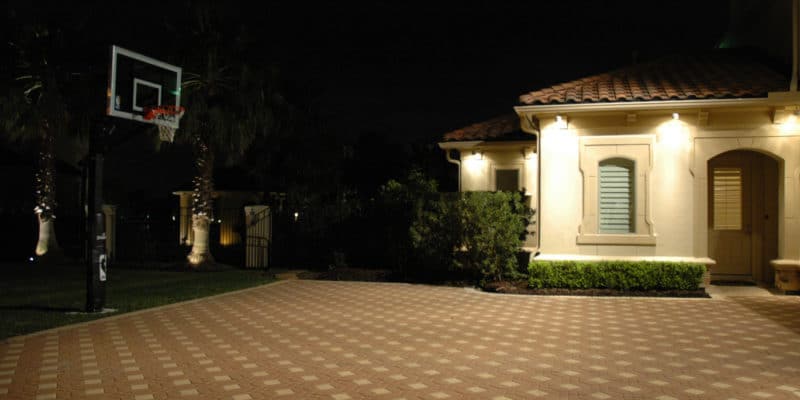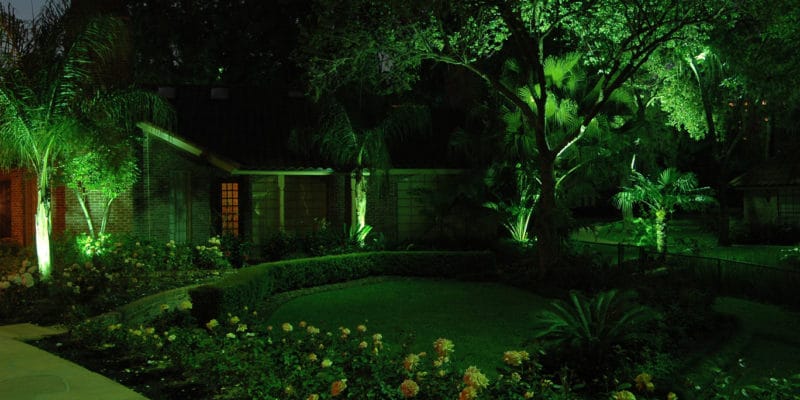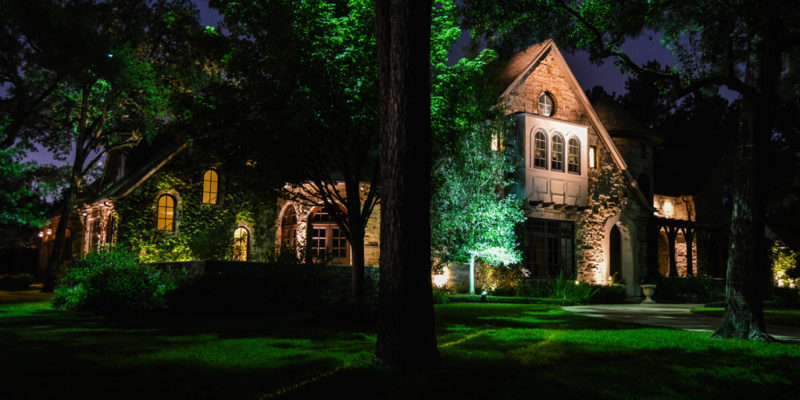An Easy 5-Step System For Houston Landscape Lighting Part I
If you are looking for a way to make your home’s exterior more beautiful and dramatic after dark, installing landscape lighting is an excellent option. The five steps outlined below will help you create an outdoor space that is not only functional but also attractive, even after the sun has set.
Step 1: Choose Several Key Focal Point
Evaluate your outdoor area during daylight hours, searching for features that you want to highlight. For instance, maybe you have a large tree or a small group of shrubs on your property that you would like to draw attention to. Perhaps you have a beautifully designed wall made of stone. Maybe the exterior of your home has a unique texture thanks to the fact that it is made out of brick or stucco. Other characteristics that could be worth highlighting include water features, flowering shrubs, or garden gates. The features you choose to highlight will be the first things that people notice after dark, so make sure to choose them wisely. After planning your focal points, you can then move on to designing lighting for other areas like your decks, sidewalks, or walkways.
Step 2: Draw Your Outdoor Space
Making a sketch of your outdoor space is extremely beneficial during the planning process. Start by drawing lines that indicate the outer edge of your property. Next, add in key features like your house, outbuildings, decks, trees, outdoor furniture, or other large elements that you are planning on keeping in their current place. In your drawing, identify the focal points that you decided to highlight in the first step. Write down the general measurements of each feature, including its height and length. If you already have landscape lighting installed, note where your current lighting fixtures are placed. This information will make it easier to decide whether you can get by with 12 V landscape lighting or whether you need to install a 120 V system.
Step 3: Choose Your Light Fixtures
To get the best results, you need to make sure that the light fixtures that you choose for each area of your outdoor space are appropriate. Depending on your space, you may need a combination of floodlights, accent lights, and in-ground fixtures. Thanks to today’s technology, the color, and brightness of the light emitted by all of these different types of fixtures can easily be controlled.
Whether you have a 12V system or a 120 V system, you typically have a couple of different options when it comes to materials. These include k-alloy aluminum and solid die cast brass. Although both of these types of materials have a bronze finish, solid die cast brass is a better choice if you live near the coast or in an area where there is a lot of moisture. Some of the factors that influence whether you can get by with a 12 V system or whether you need to install a 120 V system include the following:
- Whether or not you already have outdoor lighting installed.
- The overall size, shape, and layout of your space.
120 V systems can be quite costly and labor-intensive to install. Typically, the wiring for these systems is required to be buried deep underground. Because of that, most experts recommend only opting for 120 V lighting if the wiring is already installed in your outdoor space or if there is a nearby electrical outlet that you can use to power the system. If neither of those situations applies, installing a 12 V system is a much easier and more affordable choice.
The section that follows describes some of the most commonly used outdoor light fixtures along with information on the specific situations that they are designed for.
- Path Lights. These lights are designed to light up sidewalks or pathways, making it easier for people to see where they are going when they arrive at your home after dark.
- Accent Lights. These lights can be used to create a number of different effects, depending on how they are installed. If you point them in a downward direction, they tend to add a sense of moodiness to the space. On the other hand, if you point them up at different objects, they can add a lot of drama to your landscape. They are perfect for illuminating focal points like trees or architectural features in your outdoor space.
- Wash Lights. If you have a wall, fence, or another relatively wide surface that you want to light, a wall wash light is a great choice.
- In-Ground Lighting. With these lights, the body of the light is buried in the ground. They are an excellent choice for lighting driveways or pathways. They can also be used to light features in your yard like trees or shrubs.
- Hardscape lights. If you have structural features in your yard like walls, benches, columns, decks, or outdoor cooking surfaces, hardscape fixtures are the best choice for providing light. The unique low-profile design of these fixtures makes them easy to hide when installed on or near architectural features.
- LED Tape Lights. For a subtle lighting effect, consider installing LED tape lighting around objects that are difficult to light in any other way. For instance, you can place a strip of LED lighting around your porch roof or in an outdoor kitchen. Some types of tape lighting can be used underwater, as well, making them perfect for installing in backyard water features.
- Step lights. If you have stairs in your backyard or if you need to mark the edge of a deck or patio, step lights are a great way to keep your outdoor space safely illuminated.
- Indicator lights. These lights are often used around the outer perimeter of a property in order to indicate where the property ends.
For more on this topic, read on to the next article. If you would like to discover more tips and tricks, visit our blog. Call or contact us today for more information!



